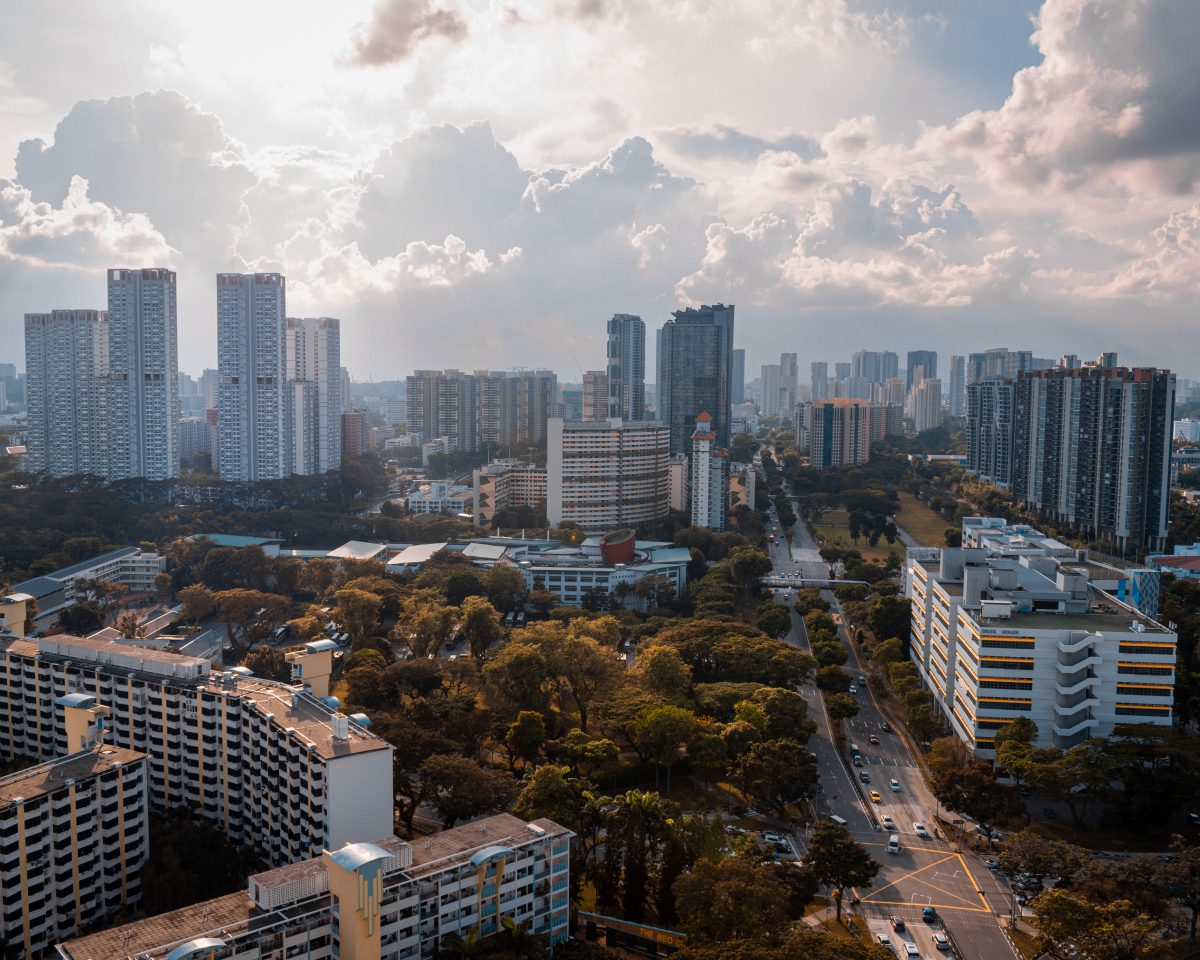May is often considered to be a month of change as it ushers in the change from spring to summer – and if recent developments that are relevant to Singapore’s real estate industry are anything to go by, there is indeed some truth to this perception.
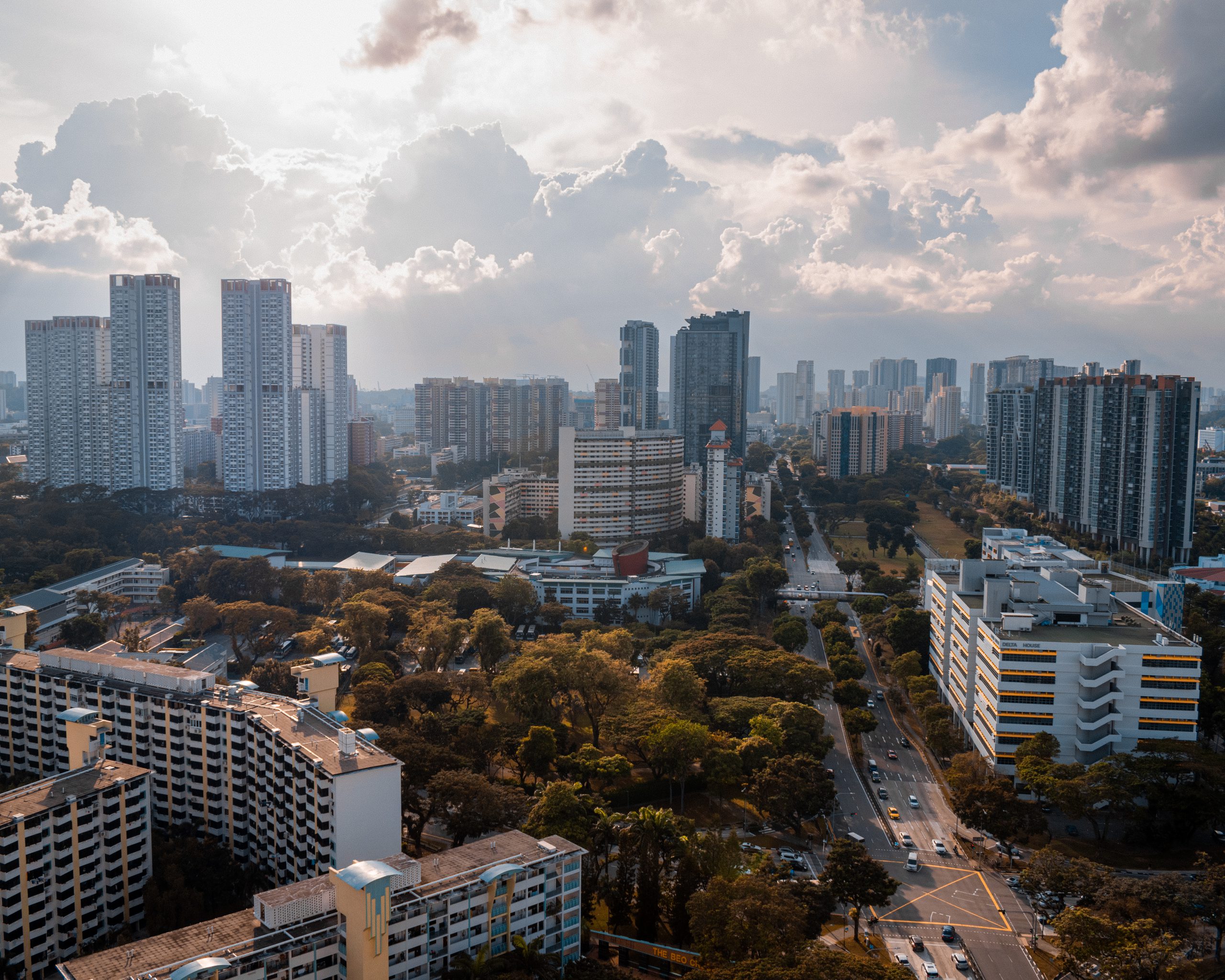
From the latest changes to HDB flat buying processes to a slowdown in interest rate hikes, we look back at key industry events from May 2023, alongside Eugene Lim (Key Executive Officer) of ERA’s Senior Management Team!

Should homebuyers pay attention to recent changes concerning HDB flat purchases? And why?
Eugene: Out of all the changes that were announced recently, I believe that the implementation of the HDB Flat Eligibility Letter will most likely make homebuyers sit up and take notice.
Starting from May 9, all HDB flat buyers, regardless of whether they are purchasing a new Built-to-Order (BTO) flat or a unit off the resale market, will be required to have a valid HFE letter.
The HFE letter will take the place of the previous Home Loan Eligibility (HLE) letter, but will indicate more than an applicant’s eligibility for HDB loans.
Instead, it will also state if an applicant meets the requirements to purchase new and/or resale HDB flats, as well as the amount of housing subsidies that they are likely to receive under the CPF Housing Grant Scheme.
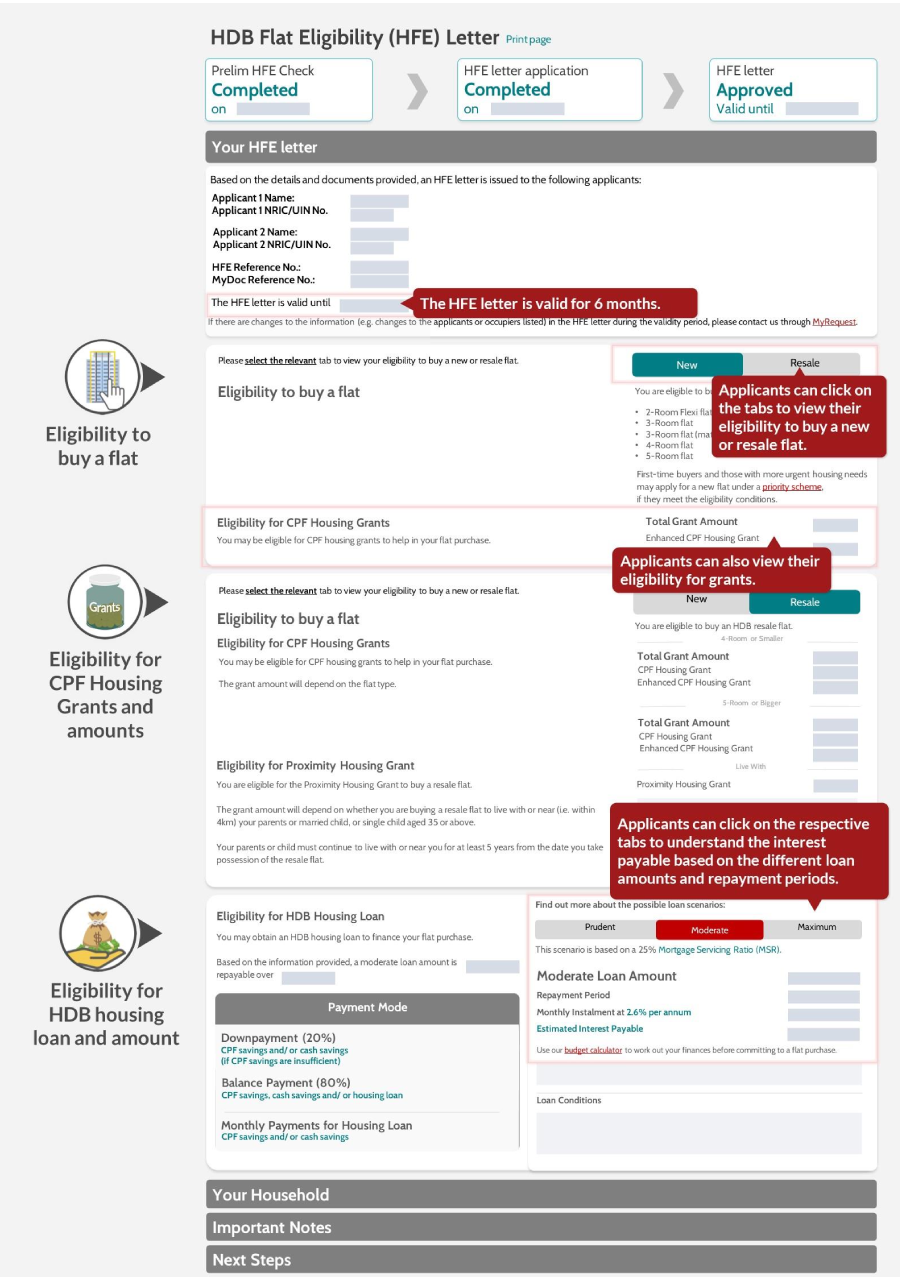
As for other changes announced alongside the HFE, the extended income assessment period of 12 months – up from the previous span of 3 to 6 months – is likely to prove beneficial to homebuyers.
In particular, individuals with variable incomes and those employed on a flexible basis can expect to benefit from this update, as it could lead to more homebuyers qualifying for HDB loans and CPF grants.
On the other hand, first-timer couples applying for an HDB flat as an applicant and essential occupier pair will want to take note of the latest change to the disbursement of housing grants.
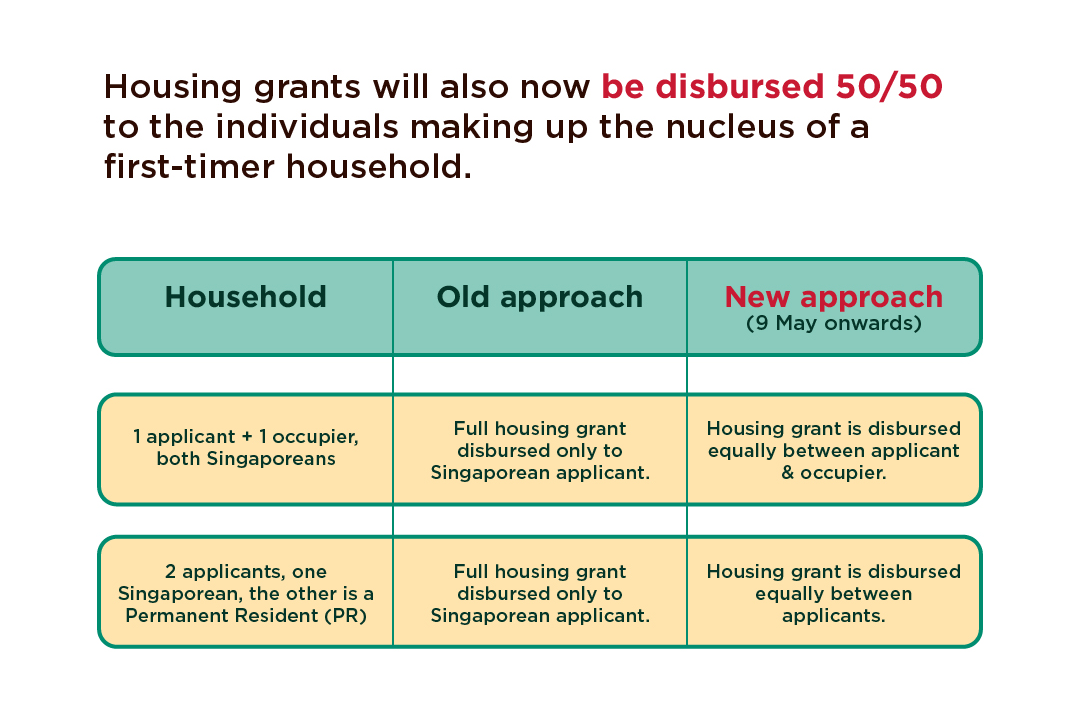
Similar to the HFE letter, the new approach to housing grant distribution takes effect on May 9 and it will see a 50/50 disbursement of subsidies between the applicants and occupiers forming a first-timer household’s nucleus.
However, what this means for first-time applicant-occupier as well as Singaporean Citizen (SC) – Permanent Resident (PR) pairs is that they will be unable to utilise the full HDB grant amount on the same flat purchase – unlike homebuyer pairs comprising solely of two SC applicants.
So, for instance, even if a first-timer SC-PR couple qualifies for a $50,000 grant, they will effectively be limited to utilising only $25,000 on the same HDB flat purchase; this could prompt them to choose flat options that are more in line with their means, or may even cause them to reconsider their purchase entirely.
Considering recent trends, what is the likelihood of interest rates stabilising in the near future?
Eugene: The news about interest rates trending upwards in recent quarters is not exactly new. In June last year, the 3-month compounded Singapore Overnight Rate Average (SORA) was approximately 0.5%, and at present, it stands at roughly 3.6% – a sizeable gap, no doubt.
| 3M SORA | 3M SORA rate of change | |
| Dec-21 | 0.17% | |
| Jan-22 | 0.19% | 13.0% |
| Feb-22 | 0.22% | 15.4% |
| Mar-22 | 0.25% | 10.7% |
| Apr-22 | 0.30% | 20.6% |
| May-22 | 0.44% | 47.7% |
| Jun-22 | 0.63% | 42.3% |
| Jul-22 | 1.04% | 65.1% |
| Aug-22 | 1.43% | 37.4% |
| Sep-22 | 1.84% | 29.0% |
| Oct-22 | 2.28% | 23.8% |
| Nov-22 | 2.69% | 18.0% |
| Dec-22 | 3.08% | 14.7% |
| Jan-23 | 3.05% | -1.1% |
| Feb-23 | 3.21% | 5.3% |
| Mar-23 | 3.35% | 4.3% |
| Apr-23 | 3.60% | 7.5% |
Source: Monetary Authority of Singapore (MAS) and ERA Research & Market Intelligence
But while the trend of high interest rates presents a challenge in terms of borrowing costs for consumers, there may be a silver lining in the clouds awaiting as the lowest rate of growth was recorded for the 3-month compounded SORA in May.
The 3-month compounded SORA, which serves as the reference rate for most floating loan home packages in Singapore, experienced a modest increase of only 1 basis point between April to May. This corresponds to a month-on-month increase of just 0.3%.
For consumers, this positive development can be viewed as a ray of light, as it may signal a possible reversal in the prevailing trend of rising interest rates.
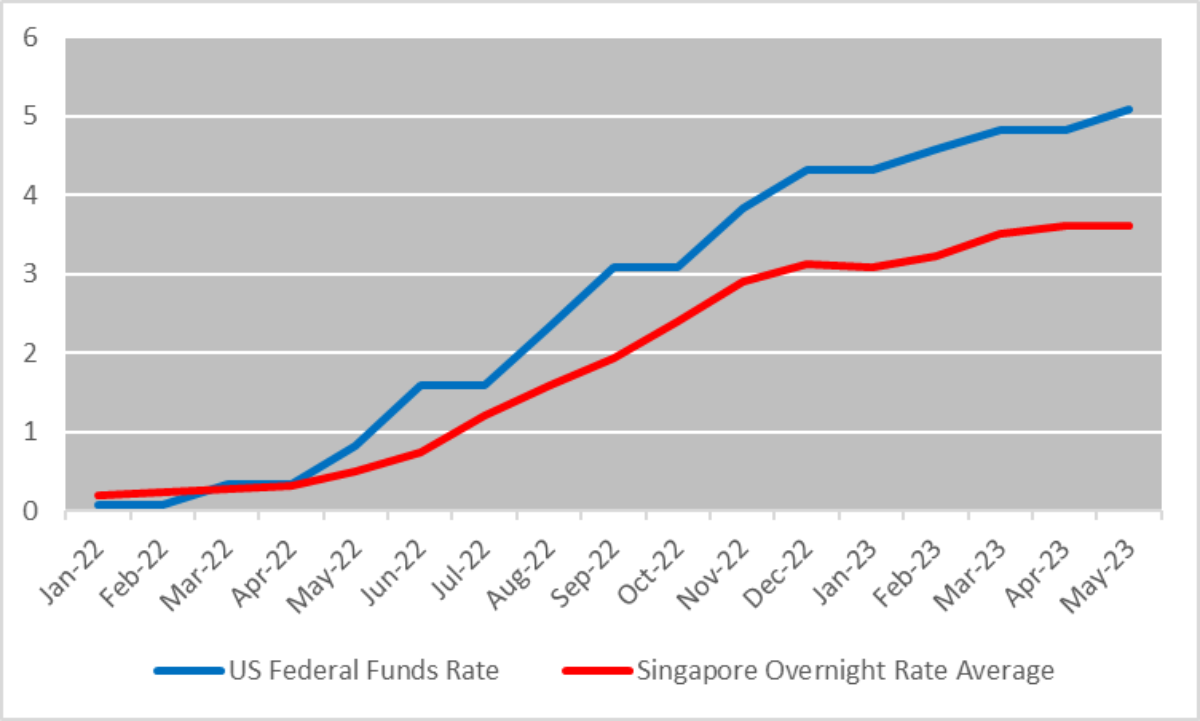
Additionally, there is news of declining interest rates for fixed rate home loans offered by local banks, which bodes well for borrowers. This event comes on the back of a potential pause on further rate hikes, but only time will tell what the Fed’s final decision will be.
Until then, it is advisable for borrowers to exercise prudency and weigh their financing options carefully before committing to any home loan package, be it fixed or floating rate.
It has been a month since the latest cooling measures were implemented. How has Singapore’s property market responded since?
Eugene: Though it has been a month since April’s cooling measures have come into effect, it is still early days and further observation is required to understand the full effects of the adjustments made to Additional Buyer’s Stamp Duty (ABSD) rates.
That said, some preliminary observations can be made based on data gathered over the past month.
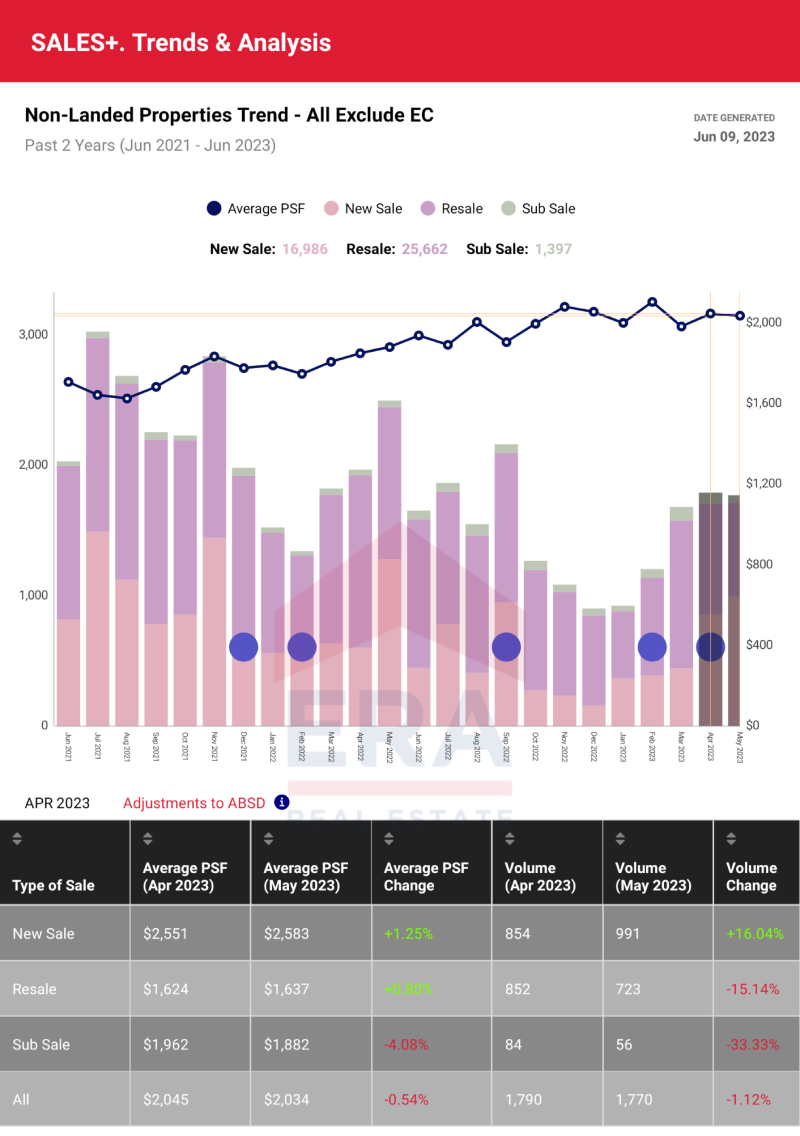
At a glance, data from SALES+ shows that the sales volume of new launch condominiums has risen month-on-month by approximately 16%, from 854 units to 991 units. This comes on the back of numerous successful launches in April and May, such as The Reserve Residences as well as The Continuum, thus attesting to the sustained demand for new condominiums in Singapore.
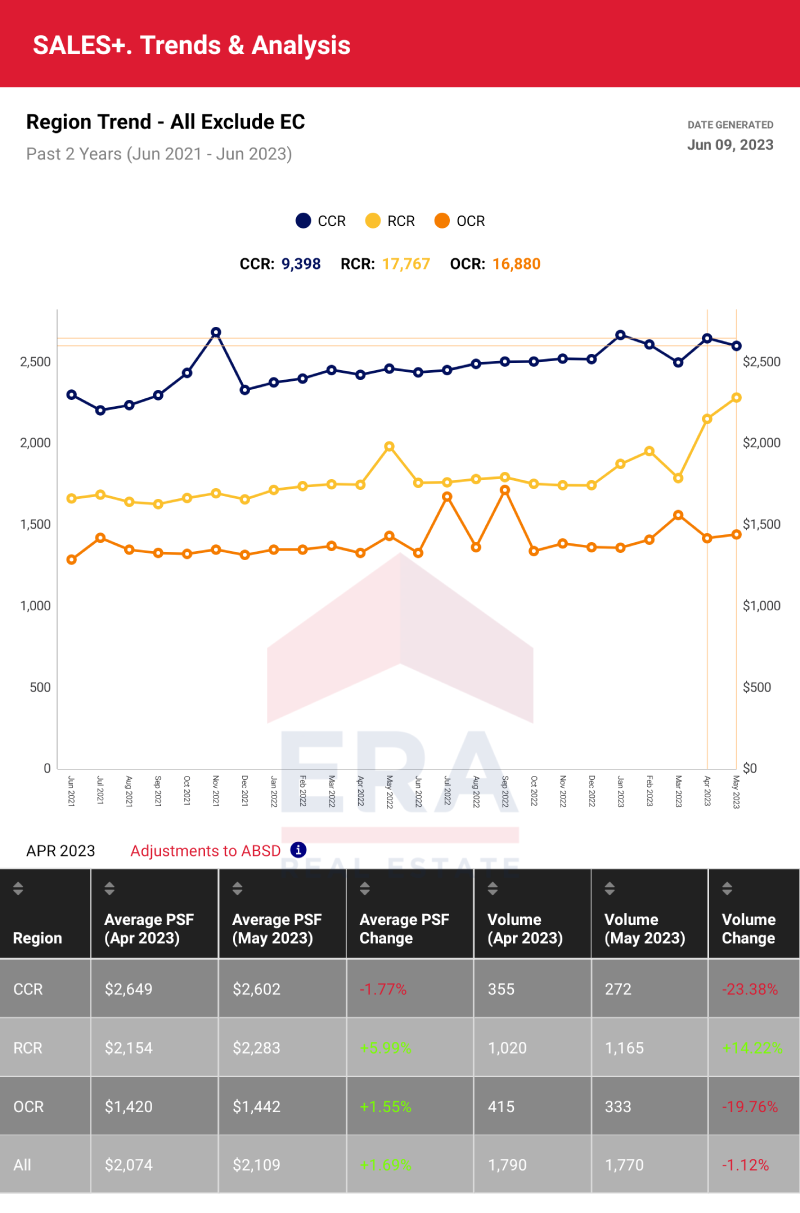
Similarly, the Rest of Central Region (RCR) saw robust growth in both sales volumes as well as condominium prices, indicating an upwards trend in the region.
Between April to May, the per square foot (PSF) prices of RCR properties saw an upwards tick of nearly 6 percentage points, whereas sales numbers grew by 14.22%. Taken as a whole, these signs may suggest that RCR properties are becoming increasingly attractive to potential buyers.
In contrast, private properties in the Core Central Region (CCR) – which traditionally see demand from international buyers – experienced a decline in both PSF prices and sales volumes across the same period. This can be largely attributed to the recent 60% increase in ABSD imposed on foreign buyers.

However, if the past is any indication, there is hope of CCR properties making a return to form in the coming months.
Back in December 2021, when the ABSD rate was raised to 30% for foreigners, there was a drop in the sales of non-landed private residential units. Still, the market rebounded within a relatively brief timeframe of a quarter.
So, what lies ahead for Singapore’s property market, post-cooling measures? Only time holds the answer.
Disclaimer for consumers
This information is provided solely on a goodwill basis and does not relieve parties of their responsibility to verify the information from the relevant sources and/or seek appropriate advice from relevant professionals such as valuers, financial advisers, bankers and lawyers.
For avoidance of doubt, ERA Realty Network and its salespersons accept no responsibility for the accuracy, reliability and/or completeness of the information provided. Copyright in this publication is owned by ERA and this publication may not be reproduced or transmitted in any form or by any means, in whole or in part, without prior written approval.

